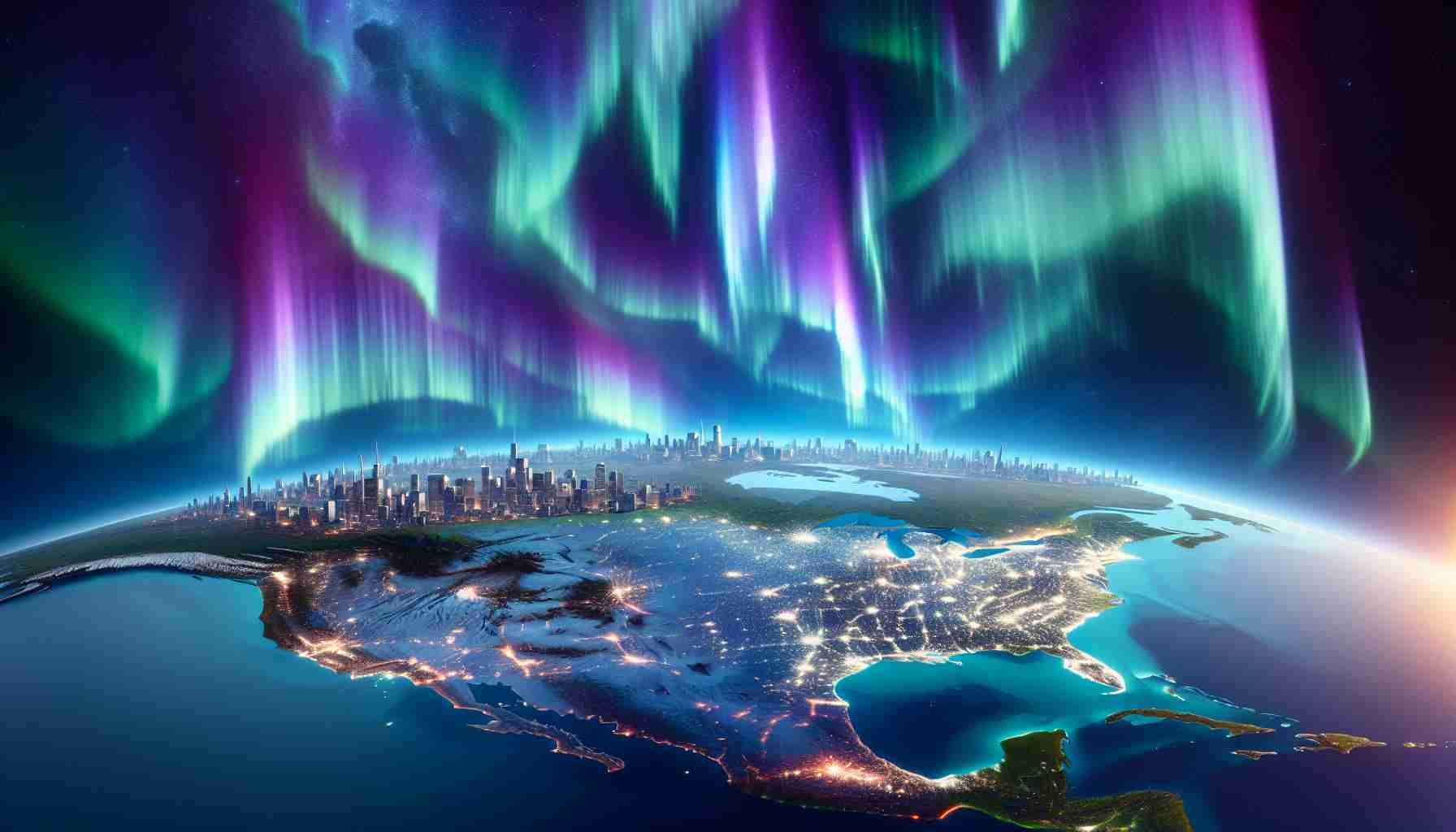The aurora borealis, or northern lights, is painting the skies of the northern United States with a tapestry of vibrant hues, ranging from delicate pinks to deep grays. This celestial spectacle, which began captivating onlookers on Friday, May 10, has been immortalized by a plethora of stunning images shared across various social media platforms.
Beneath swaying palm trees and amidst the urban glow, the polar lights have transformed familiar landscapes into scenes resembling ethereal wallpapers. With favorable forecasts, the phenomenon is set to continue its dynamic display both tonight and on Sunday night from 10:00 p.m. to 2:00 a.m. local time.
Observers are encouraged to embrace this unique opportunity and make the most of their smartphones to chronicle the fascinating play of lights across the night sky. According to Brent Gordon, Chief of Space Weather Services Branch for SWPC, smartphones may outperform the naked human eye in capturing these wondrous moments.
To secure a stunning snapshot via smartphone, users should experiment with extended exposure settings and activate any available night modes. Different photographic techniques can enhance the viewing experience:
– For a panoramic image that encompasses the entire scenario, employ the wide-angle option by holding the phone horizontally.
– Utilize the panorama function to capture an elongated view of the landscape, which can accentuate the scope of the aurora.
– Incorporate curves in your composition to guide the eye through the image, either following a “C” or “S” pattern based on the arrangement of the lights.
– Don’t shy away from spontaneous shots that include family or friends enjoying the moment; their silhouettes against the glowing backdrop can add an intimate and personal touch.
While capturing the event on camera is tempting, it’s equally important to immerse oneself in the spectacle, creating lifelong memories that extend far beyond the digital realm. Balancing the quest for the perfect picture with the experience of being present is vital, ensuring that the stories of the night’s magic can be retold and relived long after the lights have faded.
The aurora borealis, more commonly known as the Northern Lights, is a natural light display predominantly seen in the high-latitude regions around the Arctic and Antarctic. The display over the northern United States is less common and could be due to a solar storm or heightened solar activity, which increases the likelihood of this phenomenon being seen at lower latitudes.
Some relevant questions and answers to consider:
Q: What causes the aurora borealis?
A: The Northern Lights are caused by the interaction of charged particles from the sun with the Earth’s magnetosphere. The magnetosphere is distorted by solar winds, and when these charged particles collide with gases in our atmosphere, they create the vivid colors characteristic of the aurora.
Q: How often can the aurora borealis be seen in the northern US?
A: While it is a common occurrence at higher latitudes closer to the poles, the visibility of the aurora in the northern US is not frequent. It generally requires strong geomagnetic storms, which can temporarily expand the aurora’s range to lower latitudes.
Challenges and controversies:
There are challenges in predicting exactly when and where the aurora borealis will be visible, as it is dependent on solar activity, which can be unpredictable. The controversy may revolve around the environmental impacts, such as light pollution, which impair the visibility of the Northern Lights in some regions.
Advantages:
The main advantages of the aurora’s more southerly appearance include the opportunity for more people to witness this natural wonder without having to travel to extreme latitudes, as well as potential boosts to local tourism in areas where the lights can be seen.
Disadvantages:
A disadvantage could be the potential disappointment if the predictions of visibility do not materialize due to rapid changes in solar activity or weather conditions that could lead to cloud cover.
For those interested in tracking and predicting the appearance of the aurora borealis, it may be useful to visit space weather prediction centers or astronomy websites. Relevant links might include:
– Space Weather Prediction Center (SWPC)
– NASA
Remember, when planning to observe the aurora borealis, it’s important to find a dark location away from city lights to experience the full majesty of the phenomenon.
